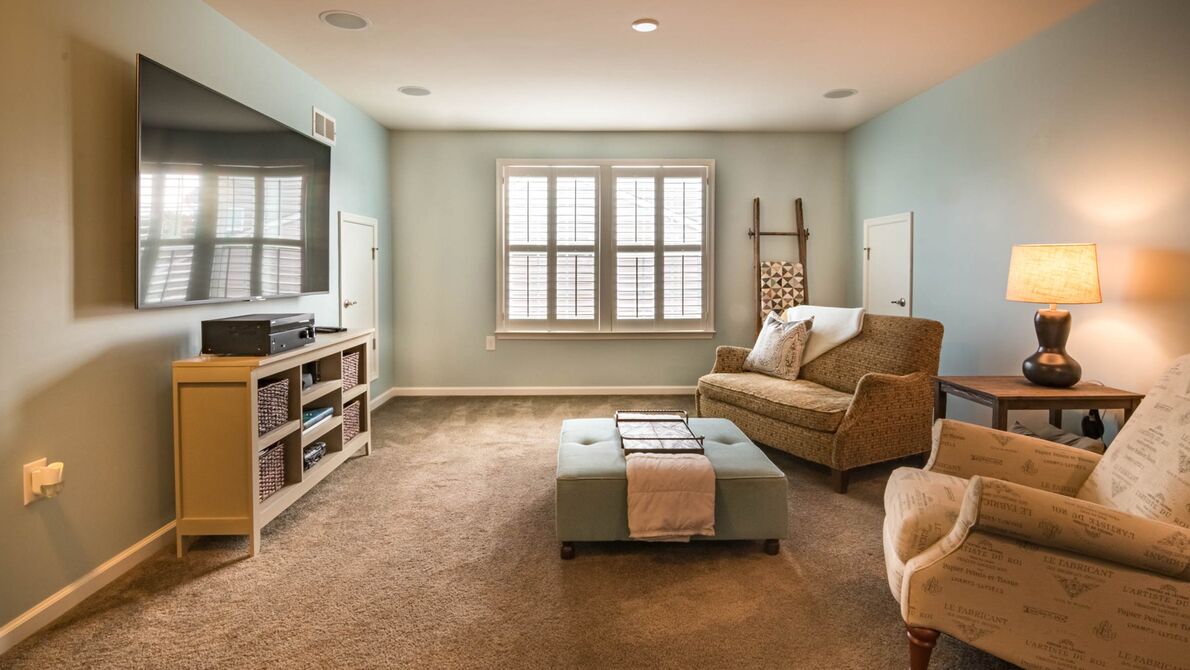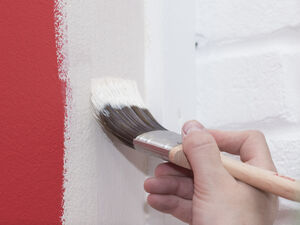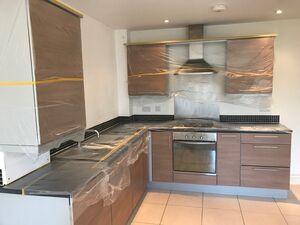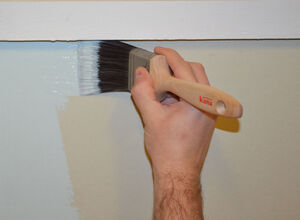When starting a new decorating project, the first thing to do is to make sure that you’ve got all the tools and equipment that you need for the job, especially those preparation essentials.
Once you’re sure that you’ve got what you need you can start to prepare your work area, ensuring that surfaces and furniture are being protected from unwanted spills, dust and dirt.
Top tip: Cover and protect everything in one go so that you can then focus on the work!
I typically begin with covering the floor, starting at the entrance of the room and working my way across to the opposite side. The floor protection you choose depends on what type of flooring you need to cover. This room project was a living room with nice carpet. You can use a good old-fashioned prep Cotton Twill Dust Sheet, a waterproof dropcloth like Trimaco’s Eliminator Dropcloth, which is slip resistant and drape better than traditional heavy duty canvas drop cloth protection, or my personal favourite, the prep Carpet Protector Film.
For my example I’ll focus on using the prep Carpet Protector Film. Thoroughly hoover the room to ensure the carpet is clean. Use the carpet protector in strips and roll it out across the floor. If you trim the edges roughly two inches from the skirting board you can then use masq Masking Tape to meet the protector and push this right down into the carpet pile, ensuring that the carpet is properly covered and protected.
Next, I’d cover my clients’ soft furnishings like sofas and armchairs with prep Polythene Backed Cotton Twill Dust Sheets or the prep Polythene Dustsheet. By using quality surface protection, I know that if I accidentally get paint on something it is all 100% protected and won’t be damaged.
Tall furniture like wardrobes or cupboards, and windows and doors can be covered easily and quickly with masq Covermasq or Trimaco Tape & Drape. Both high-quality products feature static masking film that is lined with masking tape that can be attached to surfaces. Simply attach the tape to the top of the surface area you want to cover and fold down the masking film. The unique static coating helps the film cling to surfaces and allows for easier and faster preparation that results in less cleaning up.
Lastly, to cover any hard fixtures such as lamps, tables and light fittings I use the prep Polythene Roll as it is lightweight and really easy to use. If required I use the masq tape range to secure it in place for the duration of the job.
Ready to roll
Now that all surface areas, furniture, and fittings are safely protected it’s time to start the decorating process.
Not sure which tools to use? Read this blog post: A painter is only as good as the tools they use
If you need any more information on preparing a worksite or have questions regarding the protection equipment used in this post, then please get in touch.




